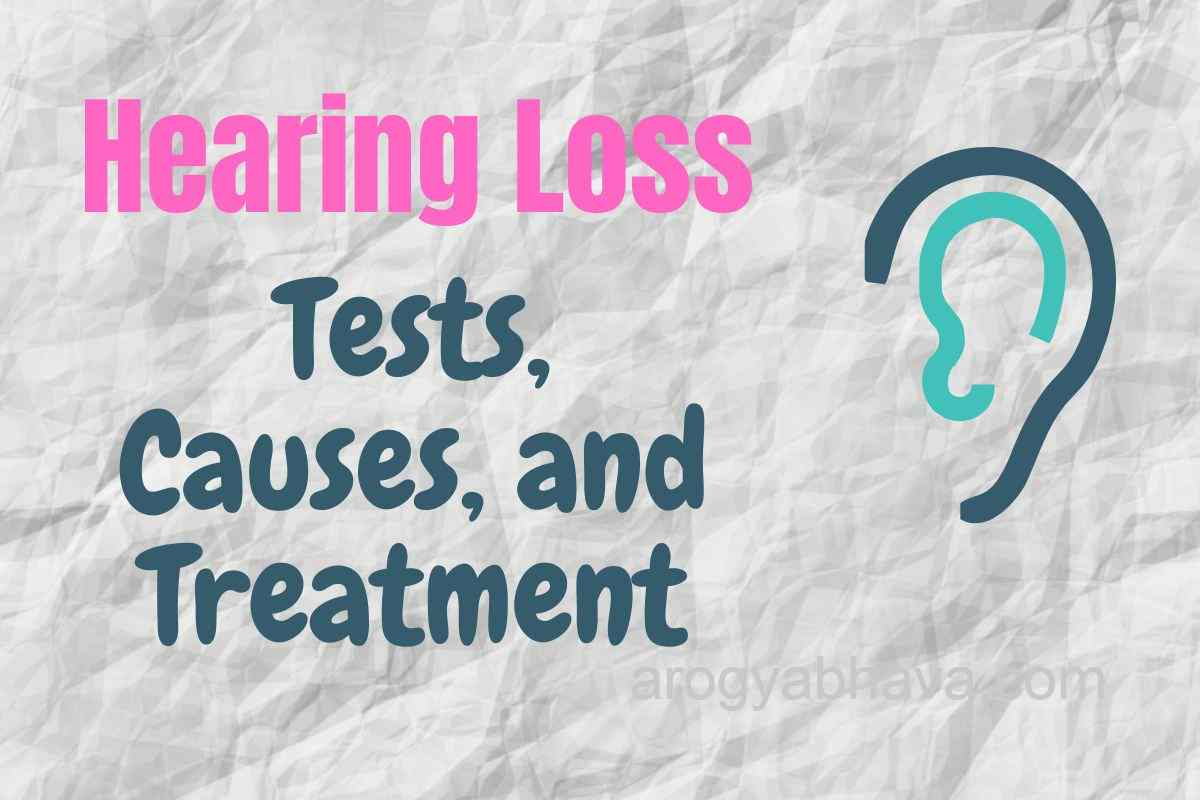Hearing Loss: Tests, Causes, and Treatment

Hearing loss is caused by both ageing and persistent exposure to loud noises. Other conditions, such as abundant earwax, can temporarily impair your ears’ ability to conduct sounds. Most types of hearing loss cannot be reversed. However, you and your doctor or a hearing specialist can work together to improve your hearing.
Medical Term For Hearing Loss
“hearing impaired” is a normal term used for those who have any degree of hearing loss, from slight to profound, including those who are deaf or hard of hearing.
Presbycusis is the medical term for age-related hearing loss. Presbycusis can make it difficult to endure loud noises or hear what others are saying.
Hearing Tests
If you find that your loved one is losing his/her ability to hear, it is better you consult an audiologist who will be able to measure the exact amount of hearing loss. Based on the report proper hearing aids would be prescribed.
The simplest hearing tests consist of whispering standard phrases at varying distances from the person’s ear. Next, come tests with a tuning fork which the doctor taps and holds against the person’s ear. Once the humming fades, the doctor moves the fork an inch or so away from the person’s ear until he or she can no longer hear any sound.
More sophisticated tests are done with a machine called an audiometer. These are conducted in a soundproof room, with the person wearing earphones. A machine emits notes at different volumes, beginning with sounds beyond the hearing range and gradually bringing down the sounds until they are just audible. The person signals that he or she can hear the sounds by pressing a button.
The audiometer measures the air conduction from the sound emitted and heard in the earphone. It also tests what is known as bone conduction, when the sound is played directly into the bone of the skull, thus bypassing the external and middle ear. The results can be presented graphically, with frequency and hearing loss plotted on a scale.
How do I know if I require hearing aids?
Many people who have hearing loss discover that they are asking their friends and relatives to repeat themselves more frequently, or that everyone around them is mumbling. The first step in treatment is to have your hearing tested. Your audiologist will test your hearing to see if you have hearing loss and if you may benefit from hearing aids.
Types of Hearing Aids and Functionality
Hearing aids deliver amplified sound directly to the ear. The oldest type was the ear trumpet, which collected sound in the outer trumpet and directed it to the eardrum. The more recent electronic hearing aids contain a microphone, which picks up sound, an amplifier to make the sound louder, and an earphone, which delivers the sound to the ear.
There are three types of hearing aids.
- The ‘body-worn’ hearing aid is battery-powered and clipped to the person’s clothes. Its disadvantages are the unsightly cord and the fact that the microphone, which collects sound, is often located at chest level whereas people tend to speak at ear level.
- Modern ‘behind-the-ear’ hearing aids are miniature versions of the earlier models. Their chief advantage is that the microphone is situated at ear level and the device is clipped on neatly behind the ear.
- ‘Inside-the-ear’ hearing aids, which are quite tiny, are built into a mould that fits the patient’s ear: all the components are miniaturized by the use of a silicon chip.
Will a hearing aid help me regain my normal hearing?
Hearing aids can make it much easier to interpret speech. They do not, however, restore your ear’s natural functioning.
What is the expected lifespan of my hearing aid?
A hearing aid has a average lifespan of five to seven years. It is critical to schedule regular consultations to ensure that your hearing aid is properly operating and programmed. Hearing aids are also sold with varying warranties, which normally range from two to three years and include repair and loss replacement. Many hearing aids continue to work properly after seven years, while others may require re-programming, maintenance, or replacement.
Tips To Use A Hearing Aid
While using a hearing aid, there are lessons to learn for both the wearer and the other members of the family. For the user, it would take a while to get used to the hearing aid. All sounds in the room get amplified when the hearing aid is on. The members of the family must learn some ground rules also.
Here are some tips on what to do.
- Start quietly and practice listening to a person speaking.
- Adjust the volume control to suit the level of your speaker.
- Ask your speaker to sit in a good light so you can see his or her face. Partial lip-reading may be helpful.
- If you are with a group, try to sit in the middle so you can hear those around you. Speaking to those who are using hearing aids
- Cut down outside noise by shutting doors and windows.
- Face the person and keep your hands away from your face. Speak directly. Your listener may also be lip-reading.
- Speak slowly and definitely. Don’t shout as this overloads the amplifier and distorts the sounds they hear.
- If your listener does not understand a question, repeat it. If this fails, then rephrase it in simpler language or write it down on paper.
- Don’t jangle keys or click fingers or pens: this may distract their attention or produce masking background noise.
Also Read: Tinnitus : Coping with Tinnitus at Home